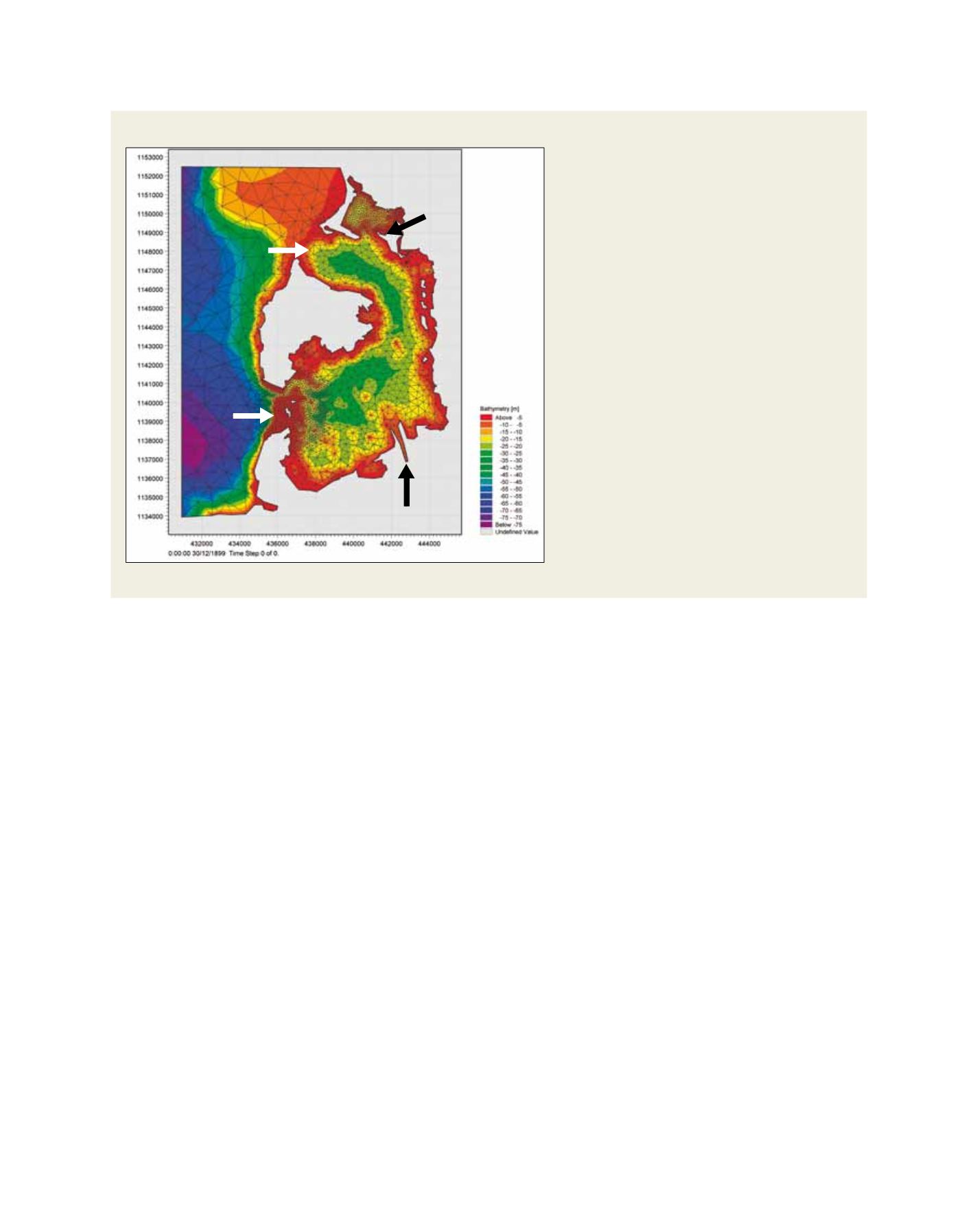

Lessons for ports worldwide
Due to the vital role they play in international trade and
global supply chains, climate change impacts on ports
stand to have wider economic effects. Studies such as
this one demonstrate that adaptation investments make
economic sense in some cases.
MEB is a prime example of a company investing in
climate resilience for business reasons. The study detailed
a number of risks associated with climate change, and
sketched out a path towards climate resilience for the port.
At the launch of the study results in April 2011, MEB’s
President, Gabriel Echavarría, announced a US$10 million
investment to protect the port against future flood risk.
An enduring lesson fromthis work is that achievingmean-
ingful climate risk and adaptation assessments without the
collaboration of government agencies, local experts and
trusted financial institutions is impossible. Such alliances
guarantee access to quality data and information, and possi-
bly lay the foundation for getting finance to support climate
resilience investments. This integrated work model (more
than four Colombian government departments and 10
research groups contributed data, information or knowledge
to this study) bore very positive results in this study. Further,
this work produced a rigorous methodology which can be
usedby other portswishing toundertake similar assessments.
This article summarises reports that are available in full at
www.ifc.org/climaterisksOf the eight areas of vulnerability that the study assessed, future
flood risk and the associated impacts on vehicle movements and
stored goods inside the port showed the most interesting results,
bearing lessons for many coastal ports worldwide.
Coastal and port experts worked alongside climate risk experts to
model projected seawater flooding. Using a 3D model of the port, flood
maps were drawn for the years 2050 and 2100 by comparing port eleva-
tion in different sea level rise scenarios during the highest recorded water
levels on the bay of Cartagena and during a 1-in-300-year storm surge.
Whichever sea level rise scenario is considered, the lowest part of the
port (a causeway road) will flood during the highest spring tide by 2018 if
nothing is done to adapt. Associated costs will depend on flood depth; for
instance, during flooding greater than 30 cm vehicles will not be able to
move, halting cargo movements and leading to costly delays for the port
operator. More importantly, such problems can degrade a port’s reputation
and push customers to look for alternative transport routes.
In the case of MEB, flooding losses could amount to 3-7 per
cent of annual projected earnings by 2032. Without action, MEB’s
earnings could be strongly affected, if not totally wiped out, in the
second half of this century.
Among the measures that a coastal port like MEB can take to increase
its resilience against climate change, the costs and benefits of raising
parts of the port were considered. Results overwhelmingly prove that it
is much cheaper for MEB to invest in adaptation than to suffer increased
flood risk. Further, it appears to be economically sounder for MEB to
raise its causeway in increments rather than all at once; this has the
added advantage of adapting the causeway height to the observed rate
of sea level rise.
[
] 185
T
ransport
and
I
nfrastructure
Navigation and berthing
• Bay of Cartagena offers protection against waves
and storm surges
• Characterized by low tides and infrequent
navigation problems
• MEB’s quays and operability ranges of cranes and
fenders can cope with observed or accelerated SLR
scenarios this century
• No indication of change in sedimentation rates
from Canal del Dique
• Plans by other port operators to increase water
depths in Bay to accommodate Post-Panamax ships
• Increased draft due to SLR will reduce dredging:
total savings by 2100 of $325,000 to $400,000
• In comparison, dredging higher in competing ports
where sedimentation from runoff is a key factor
(e.g. Buenaventura and Barranquilla)
Source: International Finance Corporation
Bocagrande
Bocachica
2D model grid of Bay of Cartagena. The two access channels are indicated in white font
MEB
Canal Del Dique
















